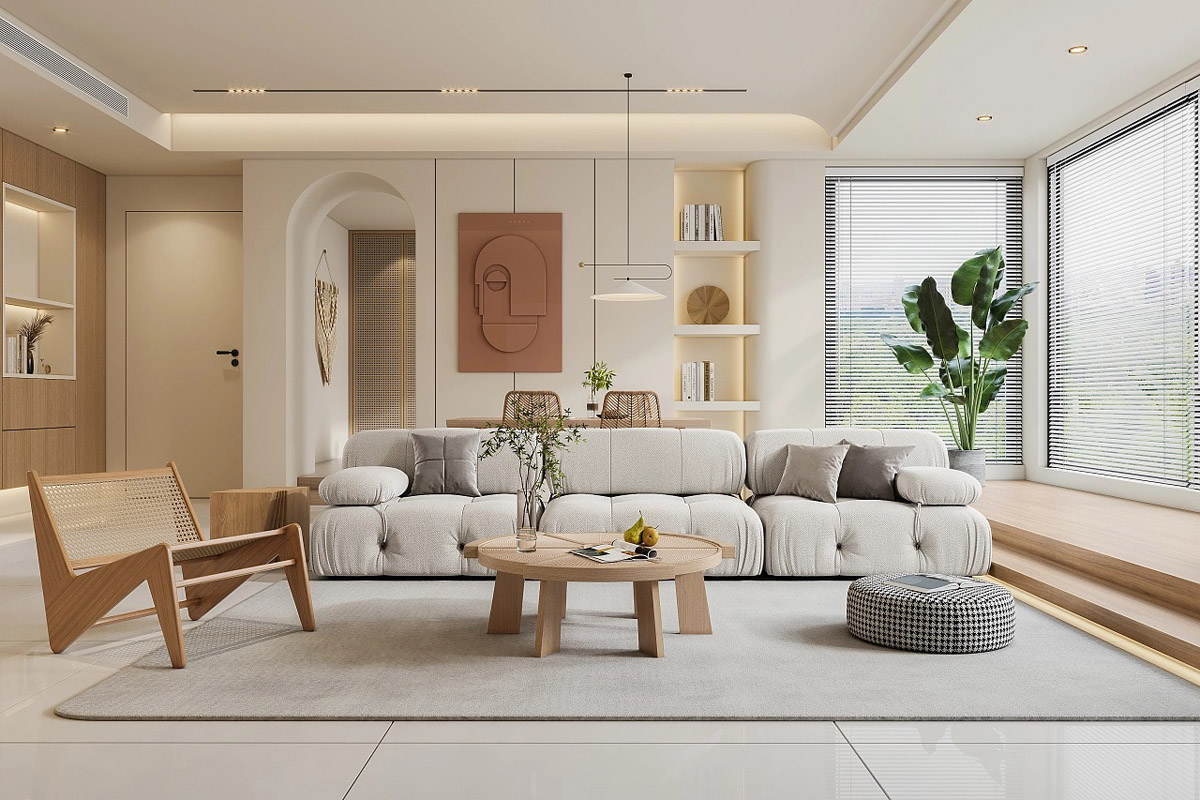Envisioning a dream home and seeing it transition from concept to reality is truly a remarkable process. A crucial part of this journey involves creating and presenting model homes. These homes act like living canvases, transforming architectural plans into reality and enabling future homeowners to immerse themselves in a world where design, functionality, and comfort effortlessly merge. In this article, we dive into the art of displaying home design through model homes, looking at their importance, design tactics, and the all-encompassing experience they provide.
The Significance of Display Homes: Beyond the Blueprint
Architectural blueprints, although essential, often lack the ability to convey the true essence of a home's design. This is where display homes come into play. They offer a tangible representation of what the finished product will look and feel like, going beyond mere floor plans to provide a holistic understanding of the spatial layout, interior design, and overall ambiance.
Display homes serve as a bridge between the architect's vision and the homeowner's imagination. They enable potential buyers to visualize themselves in the space, helping them make informed decisions based on the layout, flow, and overall feel of the home. As such, these homes are not just models; they are experiential showpieces that offer a glimpse into the future.
Design Strategies: Crafting Immersive Experiences
Creating a compelling display home involves careful planning and execution. Designers aim to create immersive experiences that resonate with visitors on both emotional and functional levels. Here are some key strategies used in crafting these experiences:
Interior Harmony
Display homes are designed with a cohesive interior theme that showcases the potential of the space. Colors, materials, textures, and furniture are chosen to reflect the intended lifestyle and resonate with the target audience.

Image source: home-designing.com
Functional Flow
A well-designed display home demonstrates how each room flows seamlessly into the next. The layout should highlight the logical arrangement of spaces, emphasizing the convenience and functionality of the design.
Spatial Visualization
Display homes employ furniture and decor that accurately represent the scale of the rooms. This helps visitors envision how their own belongings will fit within the space.
Aesthetic Appeal
Attention to detail is paramount. From lighting fixtures to cabinet hardware, every element is carefully chosen to enhance the visual appeal of the home.
Outdoor Integration
Display homes often feature outdoor living spaces, showcasing how indoor and outdoor areas can seamlessly merge, further enhancing the lifestyle potential of the home.
The Immersive Experience: Stepping into Tomorrow
Walking through a display home is a sensory experience that transcends traditional sales tactics. It allows potential homeowners to engage with the space in a way that goes beyond static images or 3D renderings.
Tactile Interaction
Visitors can physically touch and feel the finishes, walk through the rooms, and open doors and drawers. This hands-on experience fosters a stronger connection to the space.
Emotional Connection
Display homes have the power to evoke emotions. The warmth of a well-designed living room, the comfort of a bedroom retreat, and the allure of a gourmet kitchen all contribute to an emotional response that influences purchase decisions.
Problem Solving
Being physically present in a space enables potential homeowners to identify potential design challenges or opportunities for customization. This empowers them to assess whether the home aligns with their needs and preferences.
Beyond the Showroom: Navigating the Decision
As captivating as the display home experience may be, it's essential to approach it with a critical eye. While the ambiance, design, and layout are crucial, it's important to consider factors such as location, neighborhood, and practicality.
When visiting display homes, consider these steps:
✓ Research
Prior to visiting a display home, familiarize yourself with the builder's reputation, past projects, and design philosophy. This will help you set expectations and assess the home's alignment with your preferences.
✓ Ask Questions
Engage with the sales representative or designer. Inquire about material choices, design rationale, energy efficiency, and customization options. This will provide deeper insights into the home's features.
✓ Visualize Your Lifestyle
As you explore the home, imagine how your daily routines and activities would fit within the space. Consider not only your current needs but also potential future needs.
✓ Compare and Contrast
Don't limit yourself to a single display home. Visiting multiple homes by different builders allows you to compare design styles, finishes, and layouts, aiding in your decision-making process.
Conclusion
Display homes are more than mere models; they are the bridge between the abstract world of blueprints and the concrete reality of a future home. Through careful design strategies and immersive experiences, these homes captivate potential homeowners, allowing them to see, touch, and feel their dream living spaces.
Walking through a display home is a journey of exploration. It's a journey that inspires, informs, and empowers individuals to make informed decisions about their most significant investment—their home. As the art of showcasing home design through display homes continues to evolve, it remains a testament to the power of design, imagination, and the pursuit of a place to call one's own.

